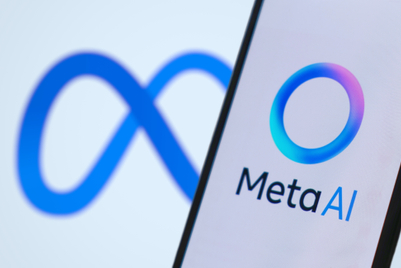
In the climactic reveal of Interstellar, NASA pilot Joseph Cooper is sucked towards the singularity of a black hole. He falls into rows upon columns of unending prisms of bookshelves. Much book-thumping ensues and Cooper is able to communicate with his daughter across time, sending her precious data that saves the day.
What’s mind-bendingly fascinating about the bookshelf ‘place’ (a Tesseract), is that it is infinite. Infinite, and random. A single event that occurs in any one bookshelf creates infinite consequences. And each of those consequences sprouts countless permutations of its own. Out there, time is not the linear arrow we know, where an event of the present leads to only one outcome in the future. Instead, time is everywhere, with every moment happening, always. And yet, it is nowhere because there is no past, present or future.
My head hurts.
What's this got to do with digital content?
As a thought experiment, we can draw parallels between how our brains, and the digital content we currently create, are uncomfortable with the non-linear, and unprepared for the infinite or random.
Today’s digital content is a prisoner of the finite, two-dimensional screen on which it manifests. Sure, we have labored to overcome its finite character by designing and deploying programmatic creative. But after all is said, digital content still suffers from a print, radio and television hangover—we continue to create mostly visual content, with linear storytelling that flows predictably like the arrow of time, on our mobile news feeds.
And our ‘biggest’ achievement? That content is stoppable. With a thumb.
What will change?
The age of thumb-stopping content will end. AI and 'zero UI' will set content free. Two technological phenomena will disrupt the 2D, linear trapping—and tapping—of content: AI (artificial intelligence) and zero UI (zero user interface).
In 2014, Spike Jonze made the movie Her. Set in futuristic Los Angeles, it is about a gentle, depressed man, falling in love with his operating system. While it is a poignant exploration of the human condition, it is also your best reference for what the future of digital content will be.
Non-linear conversations
In the film, the main character and his OS ‘Samantha’, have long, winding conversations through which they learn about, and from, each other. These conversations lead to unconventional encounters that in turn create a very unpredictable relationship arc. It all ends rather randomly.
Today, we’ve just about started experimenting to engage with proto-AI in Facebook Messenger, Siri, Cortana and the like. As natural-language processing advances, our interactions with AI will become full-blown conversations between human and machine. And conversations are unpredictable. A single question can have many possible answers, a single statement could have varied responses. Answers could raise more questions, and responses could take the conversation down un-trod paths. Digital content will have to prepare for almost infinite variations of non-linear conversations. A single, prescriptive path of storytelling just won’t do.
AI will subvert human creativity
Today, we see User Generated Content as a liberation of creativity from the minds of the few, to the experiences of many. But AI is already redefining who creates idea and how they're created. IBM Watson made the first ever AI-created movie trailer for Morgan, and humans have acted out a screenplay for a short film written entirely by an AI. The machine will continue to learn about creativity, and even as we ponder originality and authenticity, we need to be prepared to collaborate toward the unknown.
Content invades your ear
What strikes me about the science fiction of Her, is how it echoes the science fact of Apple. In the movie, the tactile 2D user interface of the screen is less dominant, while voice interactions capture human attention via discreet ear plugs. The more we reduce our dependence on a tangible screen, the closer we get to zero UI.
This year, Apple released the AirPods, and whatever you may think of the company’s recent trajectory, these little things are much more than just wireless headphones. When paired with Siri, the AirPods become as Slate says, the computer in your ear. Add Amazon Echo and Google Home to the equation, and you can see that content will thrive in zero UI.
Indeed, it’s time to re-think our content strategies!
The irony in this article
For a point of view on non–linear content, this piece is anything but! Perhaps I ask Siri for her take on it?
Hey Siri…
 Triveni Rajagopal is digital transformation deployment lead for North Asia and SEAA at Unilever. The opinions expressed here are her own. Triveni Rajagopal is digital transformation deployment lead for North Asia and SEAA at Unilever. The opinions expressed here are her own. |


.jpg&h=334&w=500&q=100&v=20250320&c=1)


.png&h=334&w=500&q=100&v=20250320&c=1)




.png&h=334&w=500&q=100&v=20250320&c=1)




.jpg&h=268&w=401&q=100&v=20250320&c=1)
.png&h=268&w=401&q=100&v=20250320&c=1)


